TMHC 110E, SKF, Hydraulic bearing puller set
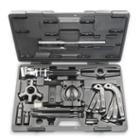
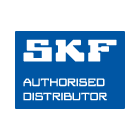
Hydraulic Pullers, EAN code: 7316572298442
TMBS 150E, SKF, Strong Back Bearing Puller Set
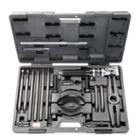

Strong Back Pullers, EAN code: 7316572298480
TMMR 8XL/SET, SKF, Full set of 8 TMMR F pullers on puller stand with 4 long arms and nose piece
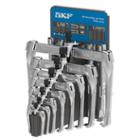

Reversible jaw pullers, EAN code: 7316576786372
TMMR 8F/SET, SKF, Full set of 8 TMMR F pullers on puller stand with nose piece
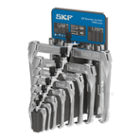

Reversible jaw pullers, EAN code: 7316576786365
TMMP 3X300, SKF, Standard Jaw Puller
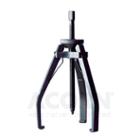

Standard jaw pullers, EAN code: 7316576621871
TMMA 100H, SKF, SKF EasyPull hydraulic puller
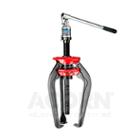

Hydraulic Pullers, EAN code: 7316572459485
TMMR 350F, SKF, Two armed reversible puller
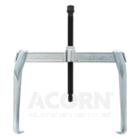

Reversible jaw pullers, EAN code: 7316571511689
TMMA 100H/SET, SKF, SKF EasyPull hydraulic puller set
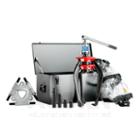

Hydraulic Pullers, EAN code: 7316572459508
TMHP 10E, SKF, Hydraulic Jaw Puller Kit TMHP 10E
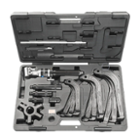

Hydraulic Pullers, EAN code: 7316572298428
TMIP 7-28, SKF, Internal bearing puller set
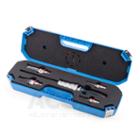

Internal Pullers, EAN code: 7316572852743
TMMR 250F, SKF, Two armed reversible puller
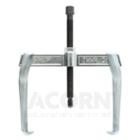

Reversible jaw pullers, EAN code: 7316571511672
TMMA 60, SKF, SKF EasyPull Mechanical puller
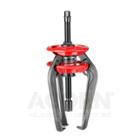

Mechanical Jaw Pullers, EAN code: 7316572464724
TMBS 100E, SKF, Strong Back Bearing Puller Set
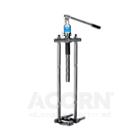

Strong Back Pullers, EAN code: 7316572298466
TMMD 100, SKF, Deep groove ball bearing puller set
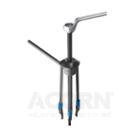

Blind Housing Pullers, EAN code: 7316572332573
TMMR 350XL, SKF, Two armed reversible puller, extra long extendable arms with nose piece
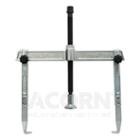

Reversible jaw pullers, EAN code: 7316575460006
This item is not currently available from our stocks.
Despatch date information is on request.
TMMK 10-35, SKF, Combined mounting and dismounting set
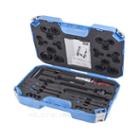

Combi Kits, EAN code: 7316573275084
TMMR 60F, SKF, Two armed reversible puller
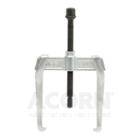

Reversible jaw pullers, EAN code: 7316571611501
TMMA 80, SKF, SKF EasyPull Mechanical puller
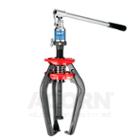

Mechanical Jaw Pullers, EAN code: 7316572464731
TMMP 2X170, SKF, Standard Jaw Puller
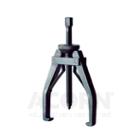

Standard jaw pullers, EAN code: 7316576621895
TMMR 250XL, SKF, Two armed reversible puller, extra long extendable arms with nose piece
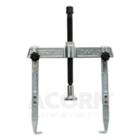

Reversible jaw pullers, EAN code: 7316575459994
What is a bearing puller?
The Bearing Puller was designed to help in the removal of bearings from shafts and housing. A bearing puller will generally have two or three metal jaws to grip the bearing, either by the inner or outer raceway. The centre bar of the puller is then positioned in the centre of the shaft's end. Opposing forces are then used to push against the end of the shaft while the jaws pull against the bearing, forcing the bearing to move off the shaft.
We can categorise bearing pullers as mechanical jaw pullers, hydraulic pullers, strong back pullers, and heavy-duty jaw pullers.
Why use a bearing puller?
Pullers are one of the most effective methods of cold dismounting. When a component is securely mounted and cannot be loosened manually, that’s where a bearing pullers come in.
This could include situations where a damaged part has led to machine breakdown. The failed component must be removed as quickly and as safely as possible in order to keep downtime to a minimum.
If you don’t have any specialist tools around, it could be tempting to use a hammer and brute force to remove the bearing. However, this can lead to surrounding components becoming damaged, causing further downtime.
A bearing puller can efficiently remove the stuck component from the shaft or recess, without causing any damage to the shaft or other surrounding components. This helps to promote the uptime and reliability of your machinery.
Bearing pullers also offer a safe method of removal when compared to techniques such as brute force or naked flames. Leading manufacturers such as SKF have optimised puller design to ensure that they enable maximum worker safety. After all, no business wants to see its staff injured.

Mechanical pullers
-
Standard jaw pullers
A versatile puller range consisting of two and three arm pullers. Standard jaw pullers offer easy and safe jaw puller operation and are one of the easiest and most effective methods of removing small to medium sized bearings. -
Reversible jaw pullers
Robust pullers for internal and external pulling. These multi-purpose reversible pullers are suitable for removing bearings and other components. The standard bearing puller set consists of eight pullers and is capable of dismounting a wide range of bearings and industrial workpieces. Extra long arms are available on the larger sizes to help remove bearings placed far from the end of a shaft. In addition, extension accessories are also available. -
Heavy duty jaw pullers
In addition to an exceptional grip on medium to large size bearings, these powerful self-centring mechanical pullers provide perfect alignment and shaft protection.
Hydraulic pullers
Effortlessly remove bearings, pulleys, gears and other workpieces. A major benefit of the hydraulic bearing puller is its ability to dismount bearings in a safe, fast and more straightforward manner.
-
Hydraulically assisted heavy-duty jaw pullers
The hydraulically-assisted jaw puller is a hydraulic version of the heavy-duty jaw puller mentioned above. However, the hydraulically-assisted version enables high forces to be easily applied and provides combined puller power and safety forces. In addition, the combination of a spindle and hydraulic cylinder allows the working length to be easily adjusted.
If you’d like to learn more about what kind of bearing puller you should use, read our guide on What Kind of Bearing Pullers Should I Use? next.
Bearing pullers FAQs
What is a bearing puller, and what is it used for?
A bearing puller is a tool designed to remove bearings, gears, pulleys, or similar parts from a shaft or housing without causing damage. They are commonly used in automotive, industrial, and machinery maintenance for safe and efficient bearing removal.
What types of bearing pullers are available?
There are several types, including:
-
Two-Jaw and Three-Jaw Pullers: Use arms to grip and remove the bearing or gear from a shaft.
-
Internal and External Pullers: Internal pullers grip from the inside of a bearing, while external pullers grip from the outside.
-
Slide Hammer Pullers: Ideal for removing tightly fitted parts with an impact action.
-
Hydraulic Pullers: Provide high force for removing large, stubborn bearings.
How do I choose the right bearing puller?
Consider the bearing's size, fit, and accessibility. Ensure the puller’s reach and spread match the bearing’s dimensions. For heavy-duty applications, a hydraulic puller may be more effective, while smaller bearings might only need a two- or three-jaw puller.
What safety precautions should I take when using a bearing puller?
Wear safety glasses, ensure the puller is properly aligned, and avoid excessive force to prevent tool damage or injury. If a part resists removal, use controlled, steady force rather than sudden jerks, or switch to a hydraulic puller if needed.
